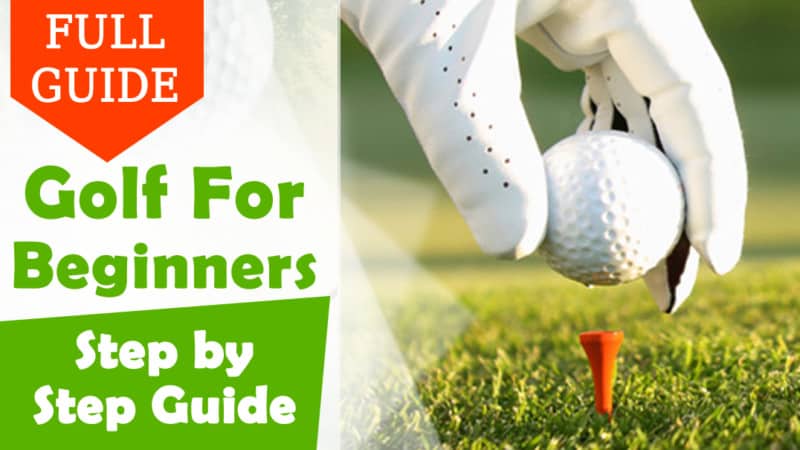
Golf has become one of the most popular sports in the world, largely due to the fact that it is what many people consider to be the perfect balance between physicality and strategy.
There are certainly more physically-demanding sports out there, which many people enjoy, but while golf may look relatively sedate in comparison, it’s still good exercise and it’s out in the fresh air, which many people consider a bonus.
At the same time, it tests your mind as much as your body and, if you want to play it competitively, even just in friendly matches, you’ll need to be able to keep your nerve. In team games, your team is there to support you, in one-on-one games like golf, you’re on your own, both literally and metaphorically.
Notwithstanding this, golf has a very strong social element, both on the green and in the clubhouse and in many places golf courses are a great way to meet new people from all kinds of walks of life
The physical benefits of golf training
To those who don’t know the game, golf may seem like minimal exercise and it’s certainly much lower cardio and lower impact than many other sports, but for many people this is actually a huge plus since golf gives them an all-round work-out with a massively lower risk of injury, in fact, if you learn good technique from the start then you are highly unlikely to experience any serious injury (or even minor one) unless you start aiming for the ranks of the pros and even then you don’t see golfers routinely getting injured the way players in other sports do.
If you want to get the maximum possible workout, then abandon golf buggies for your two feet. An 18-hole round of golf, on foot, is actually pretty good, yet gentle, cardio. If you want to up the exercise value even further, carry your bag, or at least pull it manually, rather than using a putting it in a buggy or mechanical carrier.
Regardless of how you get about the course, a game of golf will strengthen your arm and leg muscles a lot more than you might have thought it could just by watching the players. Also, it will naturally improve your hand to eye coordination. Even if you think you’re the most uncoordinated person in the world, put in enough practice and you will improve.

The mental benefits of golf training
Just as golf is a balance between the physical and the mental, in terms of the mental, it’s a balance between the stimulating and the relaxing. The stimulating is working out how you’re going to get the ball from A to B. You may think that playing on the same course regularly, this should, eventually become easy and it’s true that when golf is played competitively, players who are familiar with the course have an advantage in the same way that the home team does in other sports and for much the same reasons, they know “the rub of the green” (literally). At the same time, conditions on the course are hardly ever the same from one day to the next, the amount of moisture in the air changes, the wind changes, the temperature changes and, of course, if you’re playing competitively, your opponents change. It’s a great way to develop problem-solving skills.
At the same time, golf is known for being very relaxing. You’re out in the open air, surrounded by nature, many golf courses double as valuable habitats for wildlife, some rather famously so. That’s before you get to the 19th hole where golfers congregate to swap a round of golf for a round of drinks.
Who is golf for?
It may sound like a cliche but golf really is for everyone regardless of gender, age or disability. In particular, it’s an excellent choice for families because the handicap system makes it possible for people of different abilities to play against each other. It’s also a great choice for people who need mental stimulation at least as much as physical stimulation, or, to put it another way, for people who generally don’t like sports and/or who aren’t naturally team players. So, for example, if you’d like your child (or perhaps an older adult) to be more active, but can’t tempt them to a gym or another form of sport, then see how they get on with golf.

How to get started?
If you were worrying that getting started in golf meant splurging on expensive equipment you might have to sell, as used, if you changed your mind, then you can stop. Places which teach beginners will typically have equipment for hire and then you can start buying your own when you’re ready for it. Likewise, you can build up your golfing vocabulary and understanding of golf rules and golf etiquette as you go along. In fact, you can use our helpful guides to get started. Other than that you’ll want to find a place to learn and practice and depending on where you live that can be either an indoor driving range or an outdoor practice range. The former have the advantage that you can practice in all weathers, the latter has the advantage that they are a bit closer to the conditions on an actual golf course.
In practical terms, you can use either or both and be completely fine. What does matter, a lot, is that you get at least some lessons from someone who knows what they’re talking about and, in the nicest possible way, you’re on safer ground with a qualified instructor than with a standard player who may well have learned how to play properly but may not understand how to communicate what a beginner needs to know or to spot bad habits before they become ingrained. In other words, practice only makes perfect if you’re doing it right in the first place, otherwise it just makes permanent (or at least more difficult to eradicate). Golf is a low-injury sport, but only if it’s played properly, meaning with the correct physical technique, which will protect your body as you swing.
Golf rules
If you want to compete you will need to familiarize with the complete Rules of Golf, as a beginner, however, you can base your play simply on the three core principles which underlie the whole of golf.
1 - Play the ball as you find it after each shot
2 - Play the course as you find it
3 - If circumstances dictate that your are unable to do one of both of the above, work out something which is fair to both players and in the spirit of the game.
While the full set of rules is, of course, much longer than this, ultimately they all revolve around these three principles (and these days, they’re available in electronic format for easy reference anywhere).

Golfing etiquette
The number one rule of golfing etiquette is to stay on the practice range until you can swing well enough to get the ball into the air. This may sound like basic common sense, and arguably it is, but it’s also really important for the smooth-running of the course.
After this, once you are ready to get onto a course, golfing etiquette is, for the most part, pretty simple even for a beginner to grasp, it basically just equates to showing reasonable consideration for other players, the course and the game, which, in many cases, amounts to much the same thing. For example, when you take a shot, you will probably send up a divot, put it back. In this way you will keep the course in good condition for other players and thus support the spirit of the game.
Possibly the single, most important rule of on-course etiquette is to make sure that you play in a way which keeps yourself and others safe. This is no joke, a struck golf ball can cause serious damage as can a mis-swung club or even a piece of debris, like a stone. So, basically, take stock of what is going on around you every, single time you move your club, even for a practice swing and certainly when you hit the ball. Do everything you reasonably can to ensure that no people or animals are in the way of your shot and if you do see that your ball may hit someone (or some animal), shout out a warning. The traditional term is “fore” but if you forget it, just shout something, it will generally get the message across.
Be aware that on some golf courses at least, there is a distinct chance that you will encounter non-golfers and quite possibly dogs as well, hopefully, but not necessarily, on the lead. Depending on the situation, they may not have the legal right to be there, but for the most part, the best approach is to live and let live and in any case, you run the risk of getting into serious trouble if you hit them, even accidentally. Some courses do have public rights of way running through them and you just have to accept these. By the same token, look out for your own safety, keep your eyes open for other golfers, who may not have seen you when they took their shot.
For the record, golf is one of the safest games there is in terms of injury risk, however part of the reason for this is that people are expected to pay attention to safety at all times.
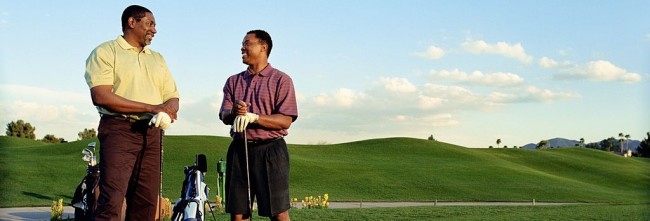
Golf Vocabulary
Most activities have their own jargon and golf is no exception, in fact, it has a fair number of words which may be new to the average person. Here’s a quick guide.
Keeping track of the score
Essentially, golf scores are based on the concept of “Par”, which is the number of strokes a good player should take on a hole or a round. This means that in golf, it’s good to be below par, in fact, that’s your aim, it’s therefore a bit unclear how the expression “below par” came to be used to describe something which was actually inferior to the expected standard. A score of 1, 2 and 3 strokes below par are described as a birdie, an eagle or an albatross respectively. A score of 1 above par is a bogey and scores worse than this just increase the multiplier, e.g. double bogey, triple bogey and so on. These nouns are also often used as verbs, e.g. “for all he was a bit unlucky, he still birdied the hole”.
Describing the course
Break - the amount a putt curves because of the slope and grain of the green
Bunker - hollow obstruction or hazard, often containing sand
Divot - piece of earth and grass that a golf shot cuts from the ground
Dog leg - fairway which turns left or right
Fairway - longest part of a hole, from the tee to the green
Flag stick - stick with a flag on it that stands in the cup on a green
Green - area of very short grass at the end of each hole, on which balls are putted into a cup
Rough - area on a golf course where the grass is longer and thicker than on the fairway
Tee - small peg on which the ball is placed for the first shot of each hole
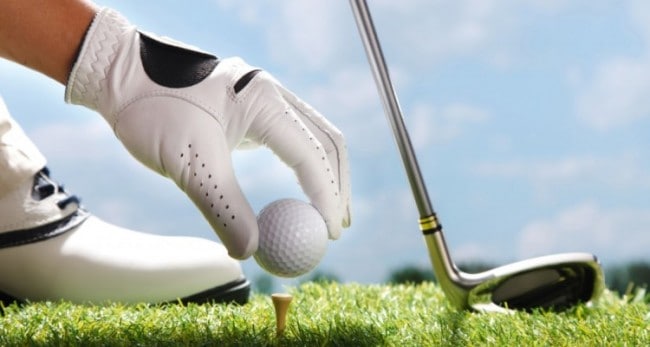
Playing actions
Chip - short, low shot to the green
Drive - shot played using the number one wood, also known as a driver
Fade - a right-handed player's shot which moves slightly from left to right
Grip - the positioning of the hands on the shaft of a club
Hazard - places on a golf course such as lakes, creeks, and bunkers that are difficult or impossible to play from
Hook - a right-handed player's shot that moves from right to left in the air
Lie - the position of the ball when it has come to rest
Pitch-and-run - a shot from near the green in which the ball carries in the air before landing and rolling towards the hole
Putt - a shot played along the ground on the green
Slice - a right-handed player's shot that moves sharply from left to right in the air
Swing - rhythmic movement which enables a golfer to hit the ball
Tee off - play the first shot to start a round of golf
Many of these words can be used to describe the action of taking the shot as well as the shot itself, e.g. she chipped it beautifully. You may also have noticed that there’s a fair bit of overlap between the words used to describe some shots and the club with which they are taken e.g. you drive with a driver and put with a putter.
Once you’ve decided to take golf seriously, you’ll need to start thinking seriously about equipment and of course good equipment is a pleasure to use and this can benefit your game. In the early days, however, attitude and focus arguably matter a whole lot more than the equipment you use and, even if you do eventually reach the stage where you can go pro, attitude and focus will still be at least as important as the equipment you use.
Attitude
Before you even start to play golf, you need to understand that in many ways golf is like life. You have a target to aim for and you have a strategy to get you there and, generally speaking, the more skilled you are, the better your chances of achieving that target, but, randomness, or chance, or luck, or whatever you want to call it, is a factor in golf as it can be in life. This means golf can be a very, very frustrating game and there can be, and will be, times when you do everything right and it still all goes wrong. You have to be able to deal with these and not let them grind you down and start leading you towards a mental sand bunker from which it will be very hard to escape.
On the plus side, there will be times when you, yourself, make absolute howlers and somehow get away with them, remember those moments too.
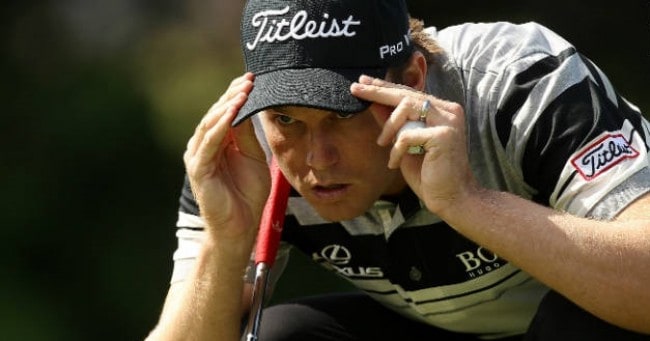
Focus
An average round of golf (18 holes) lasts about 4 hours. (A major tournament can consist of four rounds played over four days). That’s massively longer than the length of the matches in most team sports and orders of magnitude longer than many sports which are played one-against-one or one-against-many (like racing or artistic sports such as gymnastics). You won’t actually be playing all that time, for example, some of it you’ll spend walking and some of it you’ll spend waiting for your opponent to take their turn. You will, however, need to keep your wits about you at all times and, in particular, when it is your turn to take a shot and you will need to maintain your concentration over the full length of the game. Respect the mental capabilities of golfers.
Golfing gear

Golf gloves
You may have wondered why some pros wear a glove and others don’t, well the short answer is that making most golf strokes requires a combination of strength and feel, the exception is the delicate operation of putting, which is all about feel. Golf gloves improve your grip and hence can allow you to deliver more strength, however, the it comes at the price of a slight loss of feel. Many players feel that in most cases this is an acceptable trade off, except when putting or, in some cases chipping (although a few pros keep their glove on even for this), but some disagree, hence why some pros wear a glove and others don’t.
At amateur level, however, a glove can be a huge benefit if only because it offers your leading (top) hand some protection against chafing and blistering. You could say they help you to get a grip on the game, however, in order to do so, they need to fit properly. Unlike ordinary gloves, which are purely to keep your hands warm, golf gloves need to fit your hand exactly, basically the way good shoes fit your feet. You wouldn’t wear shoes with big gaps between your feet and the outer material so don’t wear golf gloves which are too big for you. Tell-tale signs that gloves are too big is that there is an excess of material anywhere on the glove and/or that the velcro strap comes more than 75% of the way across.
Also remember that if you buy leather golfing gloves, they will stretch over time regardless of how well you care for them so a glove which fitted perfectly when you bought it will, eventually, become too big for you. Leather is often considered to be the best material for golf gloves, because it is literally a second skin, but “all-weather” gloves may actually be a better option if you play a lot in damp conditions, regardless of whether that’s rain or humidity. In either case, you need to pick a glove which allows your hand complete freedom of movement, including the ability to bend your fingers comfortably.
If you decide to take golf seriously, you should think seriously about investing in at least two or three gloves so you can change them during a round as they get damp. After each game, you need to allow your gloves to dry out completely before putting them away.

Golf shoes
Good footwear is essential whatever you do and if you take any activity seriously, then generally getting appropriate footwear should be high on your list of priorities. If you choose to walk around a golf course, then you’re going to be doing a lot of walking and even if you take a buggy, you’ll still be spending a lot time on your feet. This means that golf shoes are designed to be comfortable and part of that comfort is the grip they give you on grass.

Golf balls
You may be surprised by just how much technology goes into the tiny golf ball. Here are the basics.
One-piece balls
These days, one-piece balls are generally kept for driving ranges. They are cheap, robust and soft, perfect for practicing swing after swing, but not for a real game, not even a friendly.
Two-piece balls
These are the classic recreational golfers golf balls of choice. They have a hard, high-energy core, surrounded by a soft cover, usually of Surlyn. Two-piece balls are harder to control than one-piece balls, hence why they’re not often used by complete beginners, but they roll a long way and are very durable and hence economical.
Three-piece balls to five-piece balls
This is the point where golf balls start to get both more serious and more diverse. Basically the three-piece ball is the first ball to make spin separation a reality, essentially it takes control of the ball to a whole new level. Four- and five-piece balls take this even further. The idea behind these balls is essentially the same. There is an inner core, which gives explosive energy and is most responsive to the diver and then between one and three inner layers with different capabilities which respond to different types of club, before the final outer cover, which may be made of Surlyn in the entry-level, three-piece balls but will almost certainly be made of Urethane in the higher quality golf balls as this latter is softer and offers better spin rates.
Understanding spin rates
Basically, the less spin a golf ball has, the shorter the distance it will travel through the air and the further it will roll on the ground and the more spin a golf ball has the longer the distance it will travel through the air and the less it will roll along the ground. Manufacturers produce balls with different degrees of spin for golfers with different playing styles and preferences.
Understanding compression
Essentially compression is to golf balls what pressure is to tires. It measures how much they give under pressure or, in other words, how much they change their shape when you hit them. Golf balls with low compression are called softballs and golf balls with high compression are called hard balls. Softballs are easier to strike over a distance, hard balls offer more control.
Generally speaking, the easiest way to find the right ball for you is to try some out and be prepared to review the golf balls you use as your game develops.

Golf clubs
There are three pieces of good news when it comes to golf clubs. The first is that you don’t usually have to buy them straight away, hiring them is fine. The second is that you can start out with a basic set and add to them as, when and if you need them and the third is that standard-size golf clubs will do most people just fine unless they start to take the game really seriously, in which case you will want to graduate to customized clubs. The exception to this is if you are particularly tall or short, but if you are particularly tall or short, you will be used to having to use custom fittings in any case.
Understanding golf clubs
There are two basic parts to any golf club. These are the shaft, which is made of metal or graphite and the club head, which is usually made of metal. These are joined together by a connector called the hosel.
The club head is the part of the club which actually hits the ball and each type of club head is shaped to perform a specific function. Each club head is at an angle compared to the shaft and this angle is called the loft. In simple terms, clubs with lower loft keep the ball lower to the ground and clubs with higher loft send it higher into the air. What that means in practical terms is that you want to use clubs with low loft when you want the ball to cover a long distance and clubs with higher loft when the ball only needs to travel a short distance.
The shaft is the part of the club which is held by the golfer and is used to control the clubhead. The end of the shaft, where the player holds it, is covered by the grip, which does exactly what its name suggests and helps the golfer to grip the club. Shafts are created with different degrees of flex, which basically means flexibility or grip. Faster clubs tend to have stiffer shafts and slower clubs have more flex, however flex is also adjusted based on the player’s likely level of strength, for example, men’s golf clubs have a different level of flex to the equivalent golf clubs for women.

Buying your first set of golf clubs
Usually the most cost-effective way to get your first set of golf clubs is to buy a beginner’s package set from a reputable supplier. These will give you the best balance between durability, quality and price. Getting a cheap set from a general sports store may save you some money up front, but it’s likely to be false economy as your clubs will soon give in on you (possibly while you’re playing) and investing in higher-end clubs can wait until you’ve improved enough to be able to make meaningful use of them. Also, remember that you can upgrade your set one club at a time, literally, as your budget allows.
A typical, good-quality, beginners club set, would contains something along the following lines.

One driver and one fairway wood
Woods take their name from the fact that they used to be made of wood, but are now made of metal. These are the clubs with the largest heads (which are usually hollow) and are used for shots which require fast swings to make the ball travel a long distance. The driver is probably the best-known type of wood, it has the lowest loft and is usually used to make the first shot off the tee and sometimes to progress the ball along the fairway. A fairway wood, as its name suggests, has slightly more loft than a driver and is the usual choice for long shots on the fairway.

Four irons
You can expect a 6, 7, 8 and 9 iron. As the numbers go up, so does the loft and hence the distance the ball can be reasonably expected to travel as follows:
Club Men’s Average Distance Women’s Average Distance
6-iron 150 yards 130 yards
7-iron 140 yards 120 yards
8-iron 130 yards 110 yards
9-iron 120 yards 100 yards
One hybrid
Hybrids are essentially a cross between a wood and an iron. They generally replace the lower end of the irons (2 through 5 inclusive) for longer shots as they are easier to use, hence their nicknames of utility clubs and rescue clubs. Hybrids tend to be numbered as irons but can be numbered as woods. If in doubt ask but generally it’s safe to assume that the hybrid club you are almost guaranteed to find in your set will replace the low irons and will shoot up to 180 yards or so.
One pitching wedge and one sand wedge
Wedges are basically a variation of irons used for what could be called short, sharp shots, such as getting into a green or out of a bunker.
One putter
Putters are used for those last few strokes before your ball finally drops into the hole. This means they may be most satisfying clubs you may ever use or the most frustrating.

Golf bags
If you buy a complete set of golf clubs, you will probably get a bag with it, but if you don’t golf bags are very straightforward to buy as they are, essentially, just specialized kit bags. The key point to check is that your bag has enough pockets for your needs, 5 or 6 is good. If it doesn’t you may find yourself lumbered with carrying an extra bag, so this point is well worth double-checking.
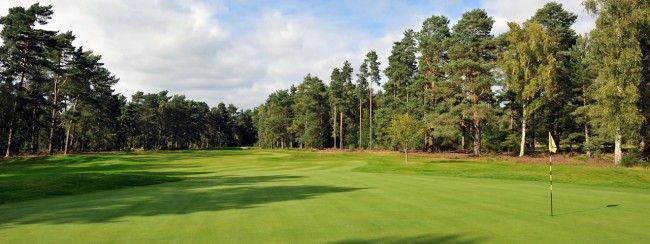
How to progress from beginner to player (to pro)
Shakespeare wrote about the 7 ages of man so let’s talk about the 7 stages of golf. You can progress through them all or stop part of the way, it’s entirely up to you. Golf “naturals” will obviously progress faster than the rest of us and starting young does help, but one of the great joys of golf is that you’re never too old to learn how to play a decent game (or better).
The complete beginner
Two words define this stage - learn and practice. If you learn the right, basic techniques from the start and practice hard, they will become natural to you, especially as your body adapts to the movements and your golfing muscles begin to develop.
The magic 120
Once you can regularly start finishing a game with a score of 120 or better you can justifiably call yourself a competent golfer. Now you need to increase your level of precision. Divide your time between the course and the driving range and keep taking at least occasional lessons. Back up your lessons with a golf swing analyser, which does exactly what its name says, it analyses your swing and gives you feedback, which you can then use to improve. If you’re working with a coach as well, then they will probably be (very) interested to see the data from your analyser.
Taking off 20
The round century, or regularly finishing rounds with a score of 100 or less, is something of a major milestone for golfers. This can actually be the most frustrating part of learning process since it’s “only” 20 less than the 120 a decent, competent, golfer can manage, but that 20 can be very had to attain. The way to get here is to practice, practice, practice, ideally every day, even if that means investing in a game simulator to use at home or going to an indoor driving range. Look on this stage as the first real test of your mental strength, which you are going to need later.
Dropping down to 90
Up until know, you’ve probably played your match largely from stroke to stroke, now you have to start thinking ahead. You also need to start adapting your game to suit the prevailing conditions on the course and what you know of yourself and how you play, for example, you need to use your clubs as best suits you, even if that means ignoring the standard guidelines as to how they are to be used. Basically, this is the point where you need to start breaking out of the mould and becoming your own, individual player.
Reaching 80
This is where golf, to a certain extent, becomes a maths game. No matter how much you may distrust statistics in other areas of life, you need them here because from this point on, you’re going to be fine-tuning your game. If you don’t have one already, then it’s time to invest in a golf analyser. It’s also time to accept that from now on, you need to be better than “good enough” at any area of golf, including the (often) dreaded putting and really work on eliminating any weaknesses in your game.
Making the 70s
Remember we spoke earlier about physical and mental fitness? Well if you want to be able to complete rounds in 70 strokes or less on a regular basis, you’re going to need to be in peak fitness both physically and mentally. This is the point where you may want to supplement your regular golf coach with a coach who will help you deal with the mental aspects of the game.
All the way to nothing
Obviously completing a round of golf with a score of 0 is impossible, but you if can regularly complete rounds of golf on par, your handicap will be 0 and you will be a scratch golfer, there’s only one place you can go from here.
Go professional
Realistically not all players can go pro and, also realistically, not all players want to. For many, probably most players, golf is the ultimate recreational game since it challenges their mind as well as challenging their body and has a great social element. On the other hand, if you do have the talent, dedication and ambition to go pro, the rewards can be huge.
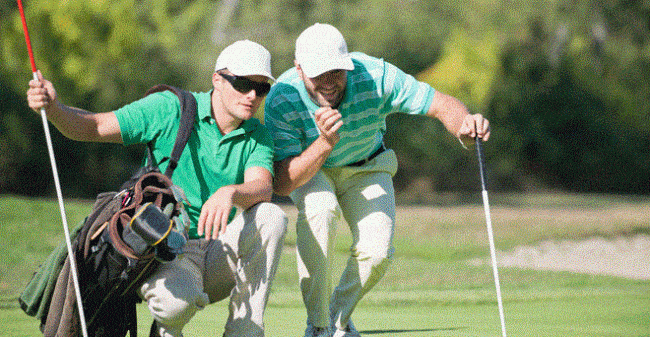
The role of caddies
A caddy is someone who carries a golfer’s bag and offers playing advice. Caddies are based at, although not usually employed by, a specific golf course, so they come to understand its characteristics. Using a caddy is entirely optional, but can be very beneficial even on your home course and especially if you’re playing an unfamiliar course. Caddies are often graded to reflect their abilities, but even trainee caddies can be very helpful to novice golfers.

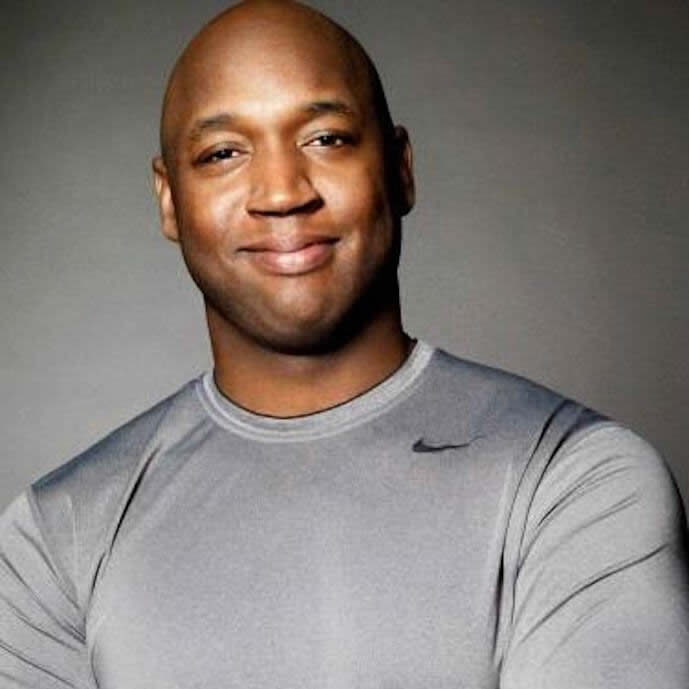




![Best Home Gym Mirror – [Full Buyer’s Guide & Review]](https://fitnessauthority.co.uk/wp-content/uploads/2021/04/Best-Home-Gym-Mirror-800x400-1.jpg)






